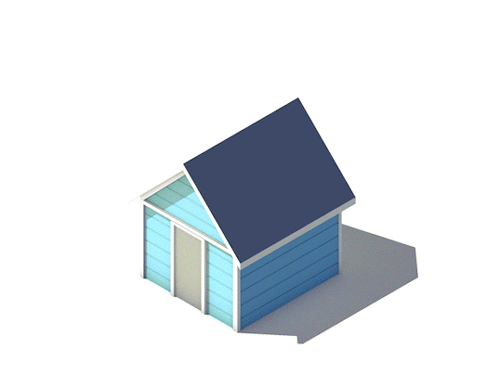You’ve heard it too many times from too many potential clients: How much would it cost per square foot to build a house? Thing is, it doesn’t matter how many times you get asked — you’ll still get stumped. At best, you’ll pause for a second before replying along the lines of: “It’s a bit more complicated than that.”
You’re not demurring or trying to figure out a way to jack up your prices. But they don’t know that, and that momentary hesitation could turn them off permanently.
Here are ways to help you to provide realistic figures without hampering your business.
What’s wrong with asking for cost per square foot?
There are two main issues to contend with:
Building Costs Vary Per Project
There’s just no getting around it: To provide an accurate square price, you need to know a lot about the project. Whatever number you quote without a detailed plan is incorrect, and can create unrealistic expectations.
Construction Material Costs Vary Wildly — And It’s Partly the Industry’s Fault
Different vendors treat different materials differently. This means that the construction and interior design community haven’t yet come to an agreement about which construction and building materials and elements are default and which are extra.
For example, some companies don’t consider garage, parking, or back doors as part of the project to be estimated during bidding. Others operate on the notion that every single detail, including final touches, should be included in the financial statement. It’s no wonder that people who neglect details tend to win more projects, but later they might trap themselves into a very uncomfortable position where the budget is calculated incorrectly.
How to deal with square foot pricing questions
As you see square foot pricing is a very touchy point since it to a large extent influences whether you are going to get an offer. Besides, it sets the cornerstone of customer price expectations, which is also a great responsibility.
So if you have received a pricing request, here are steps you should follow:
Step 1. Learn as much as you can
The first step is to learn about the project as much as you can. If there is any documentation, go for it, if you can create a list of questions or even meet for an interview with the client – even better. The more context you have, the better the plan you can create. Besides, it will show you as a person deeply interested in the subject and will help to establish initial business relationships with the customer.
Step 2. Negotiate what is included
Now, when you know something about the project, discuss with the customer all possible extras (basement, backyard, garage, etc.) Ask you, customer, whether he wants them to be included in the pricing or rather stated separately. This will not only help you to cover your back a little but also will show your experience as a designer.
Step 3. Create a draft of a financial plan
Now it is time to get to some project cost estimation. A really good practice is to compare this project to your previous ones of a similar type. Since you already know the real building cost per square foot for them, this can be your starting point. After that go through one of the estimate templates (if you don’t have any, try some of ours) and try to assume how much it might cost.
Take into consideration not only size and type of the project but also an area, type of soil there, preferred class of construction and building materials and other factors that might increase the cost.
Step 4. Consider risks
After the initial estimation and costing are done, it is time to consider risks. Since this is a ballpark estimate, you should add at least 20% of pricing to the figure you have provided. If your client is not very professional or experienced and tends to change his answers, go for at least 30%. If you are very much unsure about the project and don’t have a clear vision, it is also better to add more risks, since this is the very case, where proverb “better safe than sorry” works.
Step 5. Provided pricing with details
Now you already know what your price per square foot to build a house is and we know that you can’t wait to share it with your client. But don’t run with scissors: Take your time to prepare a proper email. Make sure that you listed which expenses are included in the pricing and which are not. Besides, don’t forget to mention that this is not the final price and the figure you provided is for reference only. It is always better to have all these details provided in writing to avoid any problems in the future.
Fohlio makes FF&E and finishes specification faster and more efficient. Sign up for your free trial!

.jpg?width=760&height=442&name=How-to-Answer-the-Cost-Per-Square-Foot-Question-Fohlio-Construction-Materials%20(1).jpg)